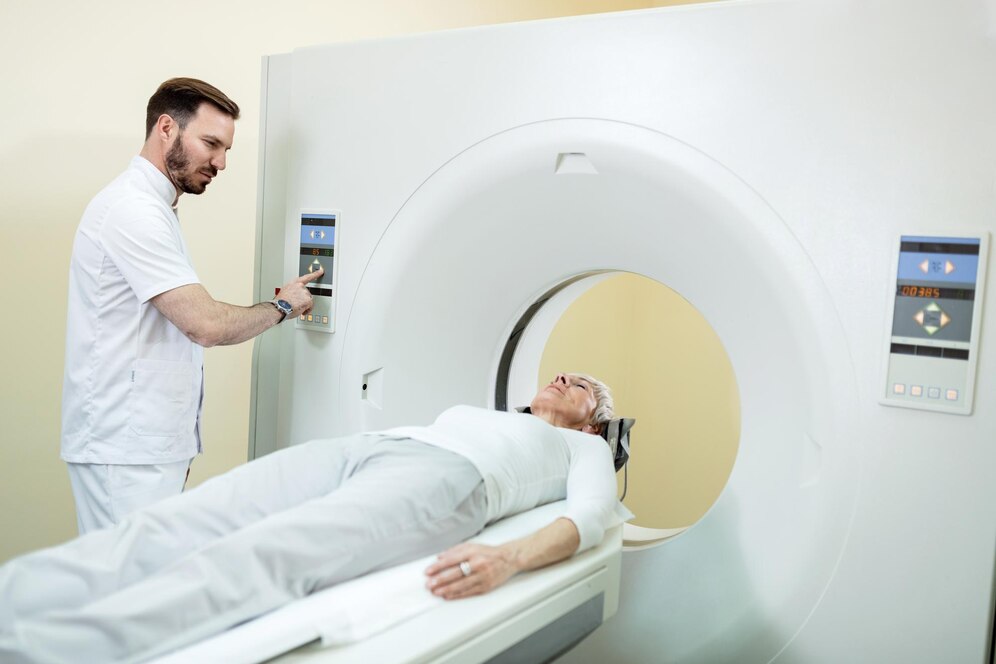PET full form: Positron Emission Tomography

PET Full Form and Its Role in Healthcare
In the realm of medical diagnostics and imaging, certain acronyms hold the key to revealing intricate details of the human body’s inner workings. One such acronym is “PET.” While you may have encountered this term in discussions about medical tests, have you ever explored the full form of “PET” and the revolutionary role it plays in advancing healthcare diagnostics? In this article, we will uncover PET full form and delve into its significance in the world of medical imaging.
PET Full Form: Positron Emission Tomography
Defining PET: “PET” stands for Positron Emission Tomography, a cutting-edge medical imaging technique that provides detailed insights into the functioning of organs and tissues within the body. PET scans are widely used to diagnose and monitor various medical conditions, enabling healthcare professionals to visualize metabolic and physiological processes in real-time.
Understanding the Significance of PET in Medical Imaging
Positron Emission Tomography has revolutionized the field of medical imaging by offering a non-invasive and highly detailed view of the body’s internal processes. Here are key aspects that highlight the significance of PET:
- Metabolic Imaging: PET scans offer a unique perspective by capturing metabolic activity within the body. This makes it particularly useful for identifying abnormal cell growth, assessing organ function, and monitoring treatment responses.
- Early Detection: PET scans can detect abnormalities at the cellular level, enabling early diagnosis of diseases such as cancer, Alzheimer’s, and heart conditions, when traditional imaging methods might not be as effective.
- Precision and Accuracy: PET provides precise information about the location, size, and activity of abnormalities, aiding in treatment planning and reducing the need for exploratory surgeries.
- Quantification: PET scans can quantify biological processes, such as glucose metabolism or blood flow, allowing healthcare professionals to measure and track changes over time.
- Combination with CT and MRI: PET scans are often combined with computed tomography (CT) or magnetic resonance imaging (MRI) to provide a comprehensive view of both anatomical structures and metabolic activity.
The Process of PET Imaging
The process of obtaining PET images involves the following steps:
- Radiotracer Injection: A small amount of radioactive material, known as a radiotracer, is injected into the body. The radiotracer is tagged to a molecule that corresponds to the biological process being studied.
- Positron Emission: The radiotracer emits positrons, which are positively charged particles. When positrons encounter electrons within the body, they undergo annihilation, resulting in the emission of gamma rays.
- Gamma Ray Detection: Specialized detectors outside the body capture the emitted gamma rays. These signals are used to create images that reflect the distribution of the radiotracer and, by extension, the metabolic activity.
- Image Reconstruction: Advanced computer algorithms reconstruct the collected data into detailed PET images that highlight areas of increased or decreased metabolic activity.
Applications in Healthcare
PET imaging finds applications in various medical fields:
- Oncology: PET scans help diagnose, stage, and monitor the treatment response of various cancers.
- Neurology: PET is used to study brain function, diagnose neurodegenerative disorders, and assess the effects of brain injuries.
- Cardiology: PET scans evaluate blood flow to the heart muscle, aiding in the diagnosis of heart conditions and guiding treatment strategies.
Conclusion
“PET,” or Positron Emission Tomography, is more than just an acronym; it’s a gateway to visualizing the inner workings of the human body in unprecedented detail. Its role in detecting and monitoring diseases, providing precise insights into metabolic activity, and facilitating early interventions underscores its significance in advancing healthcare diagnostics. The next time you encounter the term “PET,” remember that it represents a remarkable fusion of medical science and technology, enhancing our ability to understand and address health challenges with greater precision and accuracy.